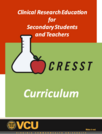
This is the first part of the Clinical Research Education for Secondary Students and Teachers.
- Subject:
- Research
- Material Type:
- Lesson Plan
- Author:
- Dr. Lisa Abrams
- Date Added:
- 07/22/2023

This is the first part of the Clinical Research Education for Secondary Students and Teachers.
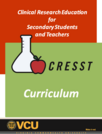
This is the fourth part of the Clinical Researcg Education for Secondary Students and Teachers.

The space industry has been creating innovative technologies for decades. Students in this lesson will explore the world of space technologies and how they play a role in our everyday life.
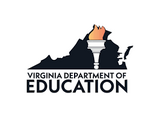
Science Instructional Plans (SIPs) help teachers align instruction with the Science Standards of Learning (SOL) by providing examples of how the content and the scientific and engineering practices found in the SOL and curriculum framework can be presented to students in the classroom.
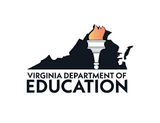
Science Instructional Plans (SIPs) help teachers align instruction with the Science Standards of Learning (SOL) by providing examples of how the content and the scientific and engineering practices found in the SOL and curriculum framework can be presented to students in the classroom.
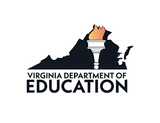
Science Instructional Plans (SIPs) help teachers align instruction with the Science Standards of Learning (SOL) by providing examples of how the content and the scientific and engineering practices found in the SOL and curriculum framework can be presented to students in the classroom.

Video Description: How does NASA test ideas, like the Mars Helicopter, before they are even built? Find out more about this revolutionary helicopter and how NASA uses mathematical modeling to turn complex ideas into solvable equations that help shape future missions. Video Length: 3:20.NASA eClipsTM is a suite of online student-centered, standards-based resources that support instruction by increasing STEM literacy in formal and nonformal settings. These free digital and downloadable resources inform and engage students through NASA-inspired, real-world connections.NASA eClips Real World segments (grades 6-8) connect classroom mathematics to 21st Century careers and innovations. They are designed for students to develop an appreciation for mathematics through real-world problem solving.

Video Description: CubeSats are changing the way we collect information. They may be small, but these little satellites are helping us answer big questions. And using a swarm of CubeSats can give us simultaneous measurements without repeatedly sending commands to the satellite to tell it what to do.Video Length: 2:21.NASA eClipsTM is a suite of online student-centered, standards-based resources that support instruction by increasing STEM literacy in formal and nonformal settings. These free digital and downloadable resources inform and engage students through NASA-inspired, real-world connections.NASA eClips Real World segments (grades 6-8) connect classroom mathematics to 21st Century careers and innovations. They are designed for students to develop an appreciation for mathematics through real-world problem solving.

NASA eClips Real World: Food Security -- Monitoring Crops from SpaceVideo Description: Discover how NASA's Earth-observing satellites gather data to monitor food growth. Dr. Inbal Becker-Reshef describes how mathematics is used to interpret satellite data and describe vegetation and crop yield. Dr. Hannah Kerner shares how algorithms and models use NASA data to describe and predict food supply and food shortages. This work through NASA Harvest provides tools for farmers and governments to describe and predict food security worldwide. Video Length: 5:25.NASA eClipsTM is a suite of online student-centered, standards-based resources that support instruction by increasing STEM literacy in formal and nonformal settings. These free digital and downloadable resources inform and engage students through NASA-inspired, real-world connections.NASA eClips Real World segments (grades 6-8) connect classroom mathematics to 21st Century careers and innovations. They are designed for students to develop an appreciation for mathematics through real-world problem solving.

Video Description: At NASA everything begins with an idea. Physical models help NASA engineers and technicians test those ideas before building full-scale versions. Learn more about the important role physical modeling, building prototypes and mathematics play in engineering solutions. Video Length: 3:11.NASA eClipsTM is a suite of online student-centered, standards-based resources that support instruction by increasing STEM literacy in formal and nonformal settings. These free digital and downloadable resources inform and engage students through NASA-inspired, real-world connections.NASA eClips Real World segments (grades 6-8) connect classroom mathematics to 21st Century careers and innovations. They are designed for students to develop an appreciation for mathematics through real-world problem solving.

Video Description: Discover how NASA's Earth-observing satellites gather data to monitor food growth. Dr. Inbal Becker-Reshef describes how mathematics is used to interpret satellite data and describe vegetation and crop yield. Dr. Hannah Kerner shares how algorithms and models use NASA data to describe and predict food supply and food shortages. This work through NASA Harvest provides tools for farmers and governments to describe and predict food security worldwide. Video Length: 2:09.NASA eClipsTM is a suite of online student-centered, standards-based resources that support instruction by increasing STEM literacy in formal and nonformal settings. These free digital and downloadable resources inform and engage students through NASA-inspired, real-world connections.NASA eClips Real World segments (grades 6-8) connect classroom mathematics to 21st Century careers and innovations. They are designed for students to develop an appreciation for mathematics through real-world problem solving.
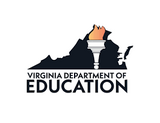
Science Instructional Plans (SIPs) help teachers align instruction with the Science Standards of Learning (SOL) by providing examples of how the content and the scientific and engineering practices found in the SOL and curriculum framework can be presented to students in the classroom.
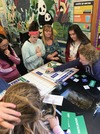
Lesson Length: 1-2 hoursGrade Level: 6-8Students will explore population interaction and impacts on an ecosystem through a breakout box activity grounded in engineering design thinking. Students will learn about how bees are interrelated within an ecosystem by solving clues to save a hive from a breakout box and they will engineer a plan to incorporate bees into a community that addresses concerns, benefits and trade offs for the bees and the humans.This material is based upon work supported by the National Science Foundation under Grant No. 1657263. Any opinions, findings, and conclusions or recommendations expressed in this material are those of the author(s) and do not necessarily reflect the views of the National Science Foundation.
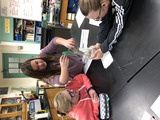
Lesson Length: 1-2 hoursGrade Level: 6-8Students build a water filter with a variety of natural and commercially produced materials. First they test the materials and then choose which to layer together themselves based on material performance. Students learn about water resources and engineered supports for the earth’s water systems and the impacts on environmental and human health. Engineering connections are highlighted throughout the lesson. Special thanks to Giles County, VA STEM Coordinator, Christina Martin, whose unit on The Global Water Crisis was the inspiration for this lesson. Also thanks to the NASA Water Filtration Challenge (https://www.jpl.nasa.gov/edu/teach/activity/water-filtration-challenge/) that helped guide Christina in the development of her lesson.This material is based upon work supported by the National Science Foundation under Grant No. 1657263. Any opinions, findings, and conclusions or recommendations expressed in this material are those of the author(s) and do not necessarily reflect the views of the National Science Foundation.
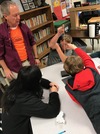
Lesson length: 1-2 hoursGrade level: 6-8Students use a recipe to create bouncy balls and then measure the bounce of their ball to test damping qualities of different materials. Students practice using the scientific method and think about how engineers might use it.This material is based upon work supported by the National Science Foundation under Grant No. 1657263. Any opinions, findings, and conclusions or recommendations expressed in this material are those of the author(s) and do not necessarily reflect the views of the National Science Foundation.
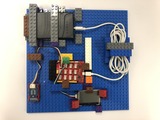
Teachers and students can learn how to put together a Microcontroller Kit with an environmental conditions sensor that measures temperature, humidity, pressure and altitude and could be used for multiple experiments and shared collectively amongst departments or schools.This material is based upon work supported by the National Science Foundation under Grant No. 1657263. Any opinions, findings, and conclusions or recommendations expressed in this material are those of the author(s) and do not necessarily reflect the views of the National Science Foundation.
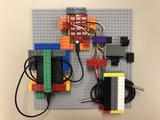
Teachers and students can see an example of how to put together a Microcontroller Kit with a Temperature sensor that could be used for multiple experiments and shared collectively amongst departments or schools.This material is based upon work supported by the National Science Foundation under Grant No. 1657263. Any opinions, findings, and conclusions or recommendations expressed in this material are those of the author(s) and do not necessarily reflect the views of the National Science Foundation.
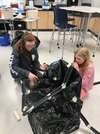
Lesson Length: 1-2 hoursGrade Level: 6-8Students learn about potential and kinetic energy as it relates to mountain roads. The activities are grounded in engineering design thinking as it relates to engineered roads and road repair. Also included is a challenge activity with renewable energy Snap Circuit simulations.This material is based upon work supported by the National Science Foundation under Grant No. 1657263. Any opinions, findings, and conclusions or recommendations expressed in this material are those of the author(s) and do not necessarily reflect the views of the National Science Foundation.
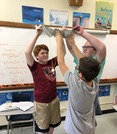
Lesson Length: 1-2 hoursGrade Level: 6-8Students learn about relationships between earth and space including elements of our solar system, gravity, escape velocity, and space exploration though a breakout box experience. They solve clues about space and conditions needed to support life on a planet and perform tests related to space travel. Clues for opening locks on the breakout box are purposefully challenging to simulate the struggle engineers often grapple with when problem solving.This material is based upon work supported by the National Science Foundation under Grant No. 1657263. Any opinions, findings, and conclusions or recommendations expressed in this material are those of the author(s) and do not necessarily reflect the views of the National Science Foundation.
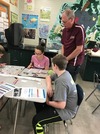
Lesson Length: 1-2 hoursGrade Level: 6-8Students will explore the carbon emission impacts of different lifestyle choices. The activity is grounded in engineering design thinking as it relates to a family's carbon footprint and options to shift that footprint to make change (trade offs). Students will understand carbon impacts, work in teams (families) to negotiate lifestyle adjustments, and brainstorm opportunities for engineered improvements to decrease carbon emissions.This material is based upon work supported by the National Science Foundation under Grant No. 1657263. Any opinions, findings, and conclusions or recommendations expressed in this material are those of the author(s) and do not necessarily reflect the views of the National Science Foundation.